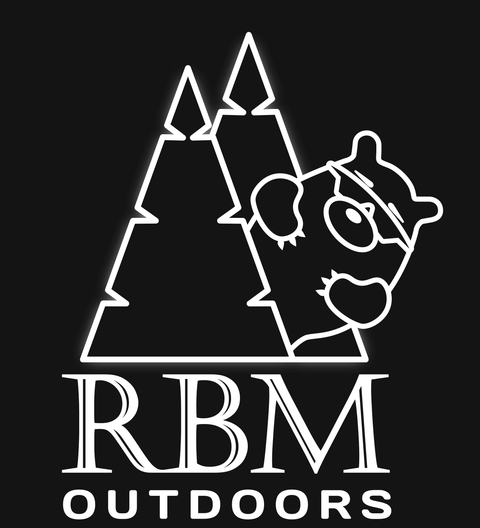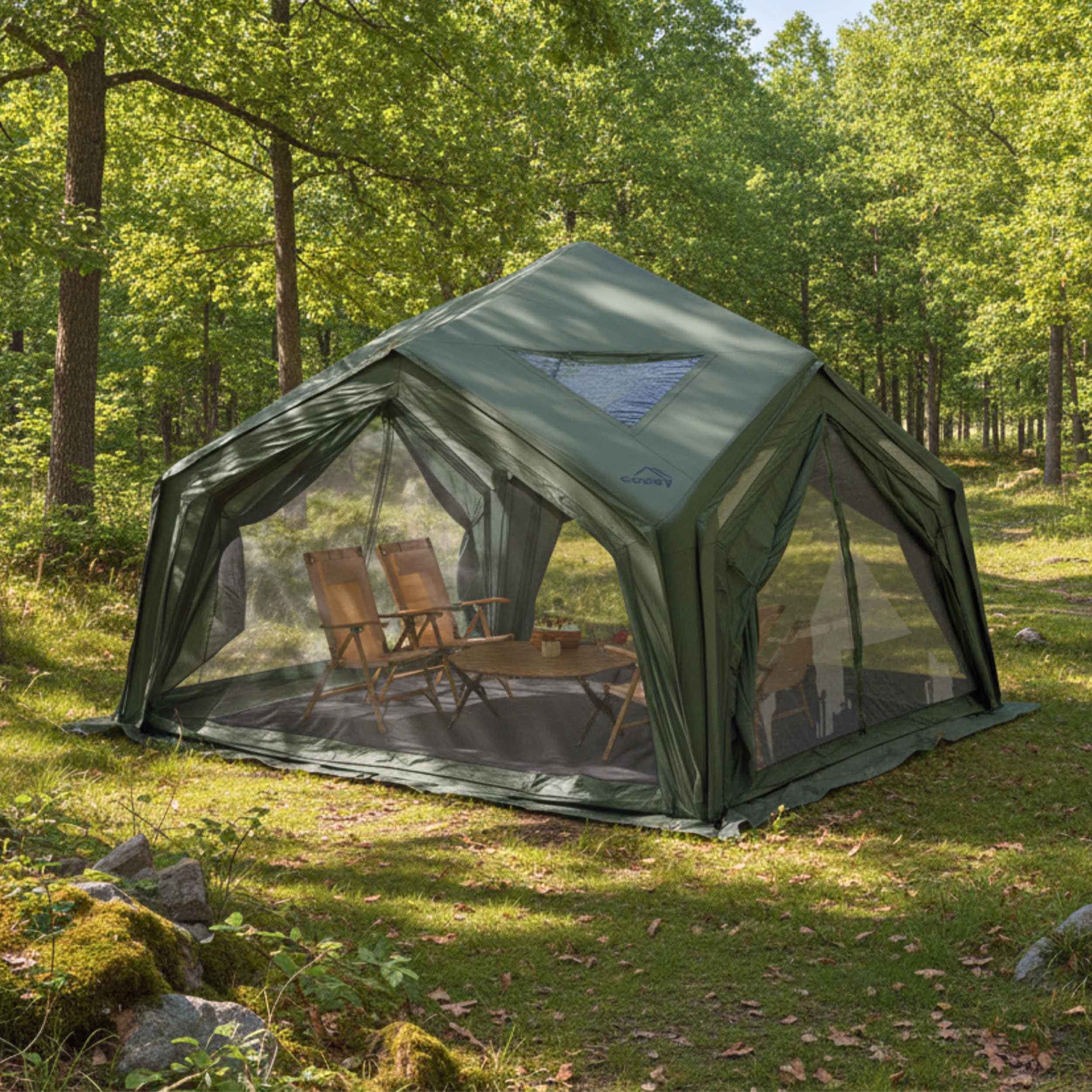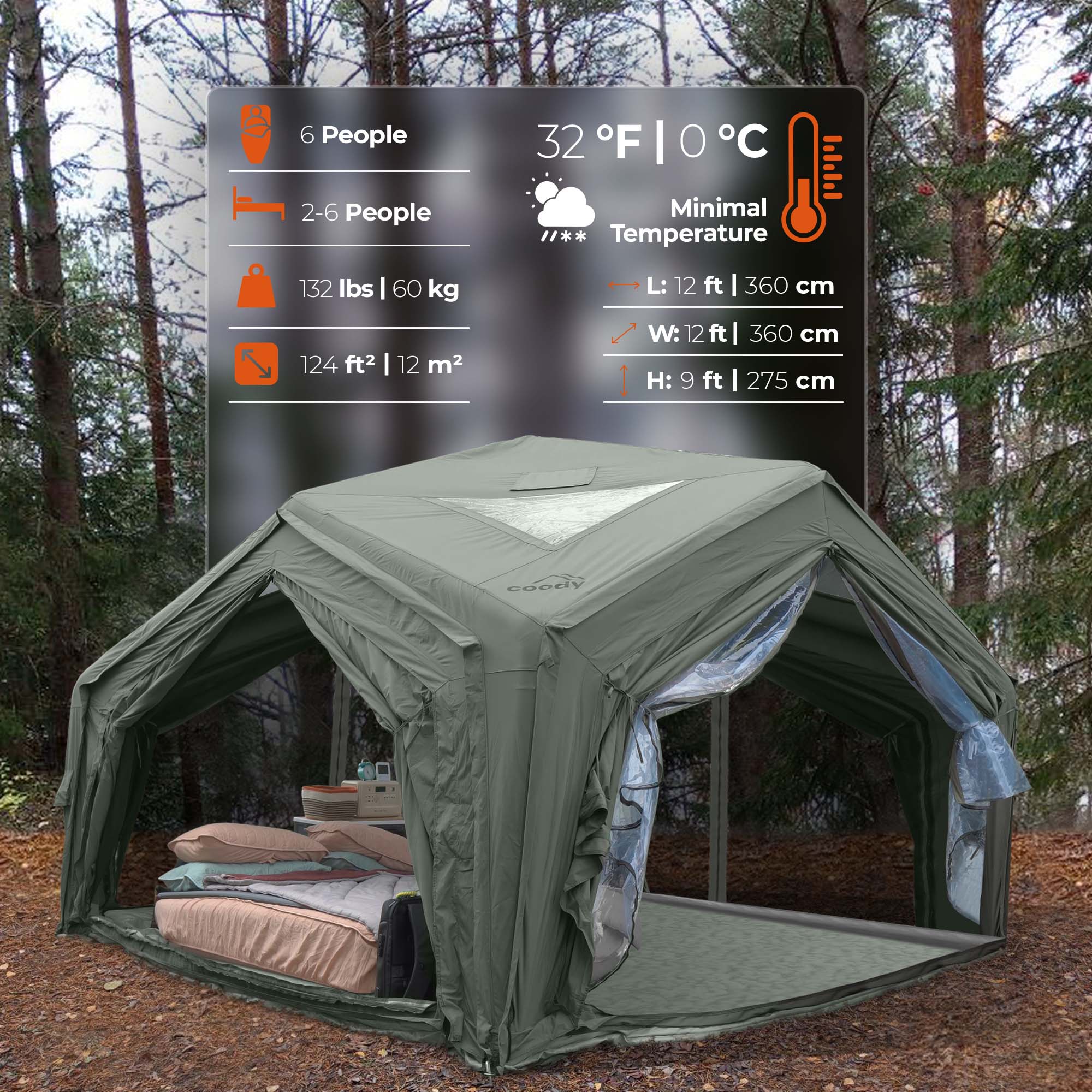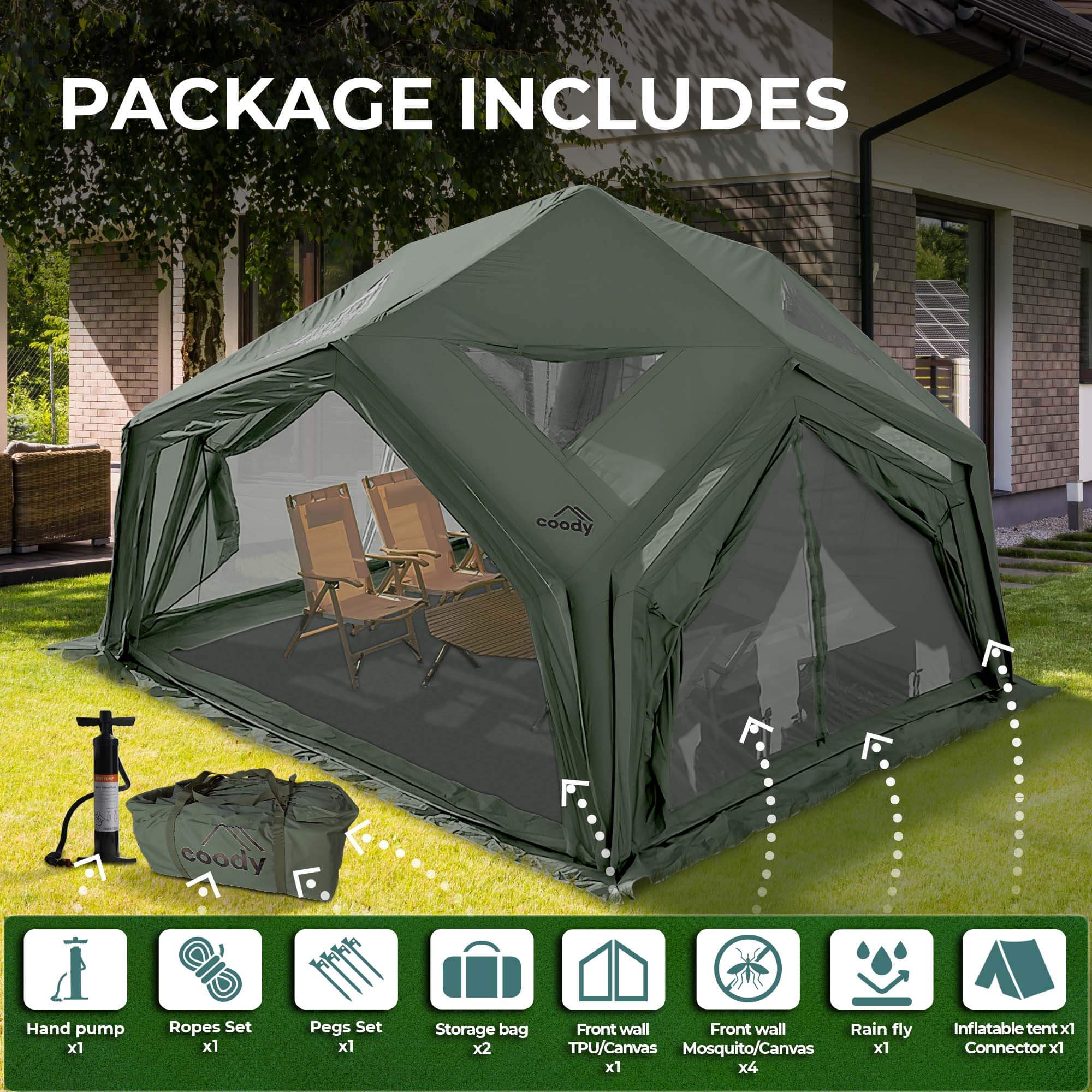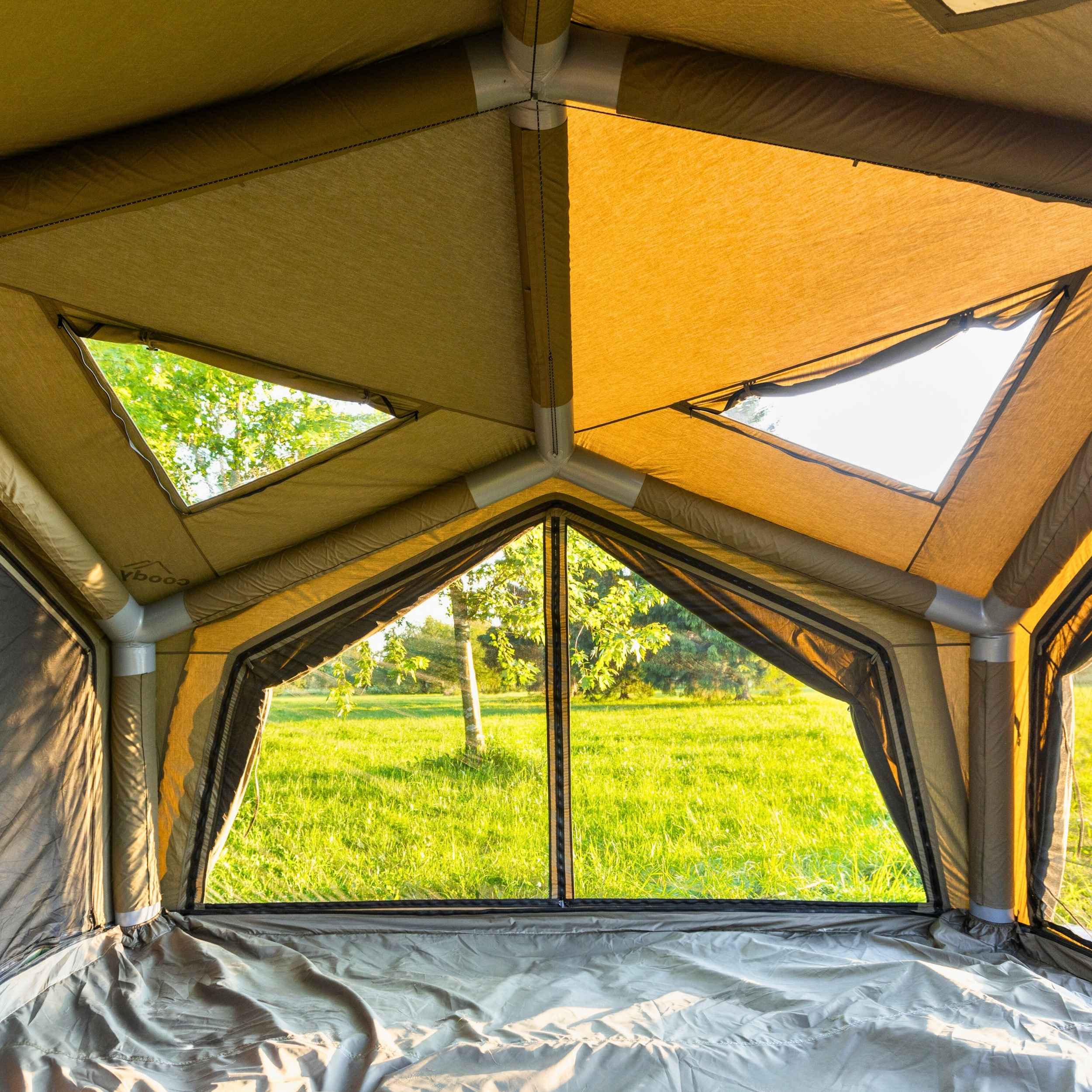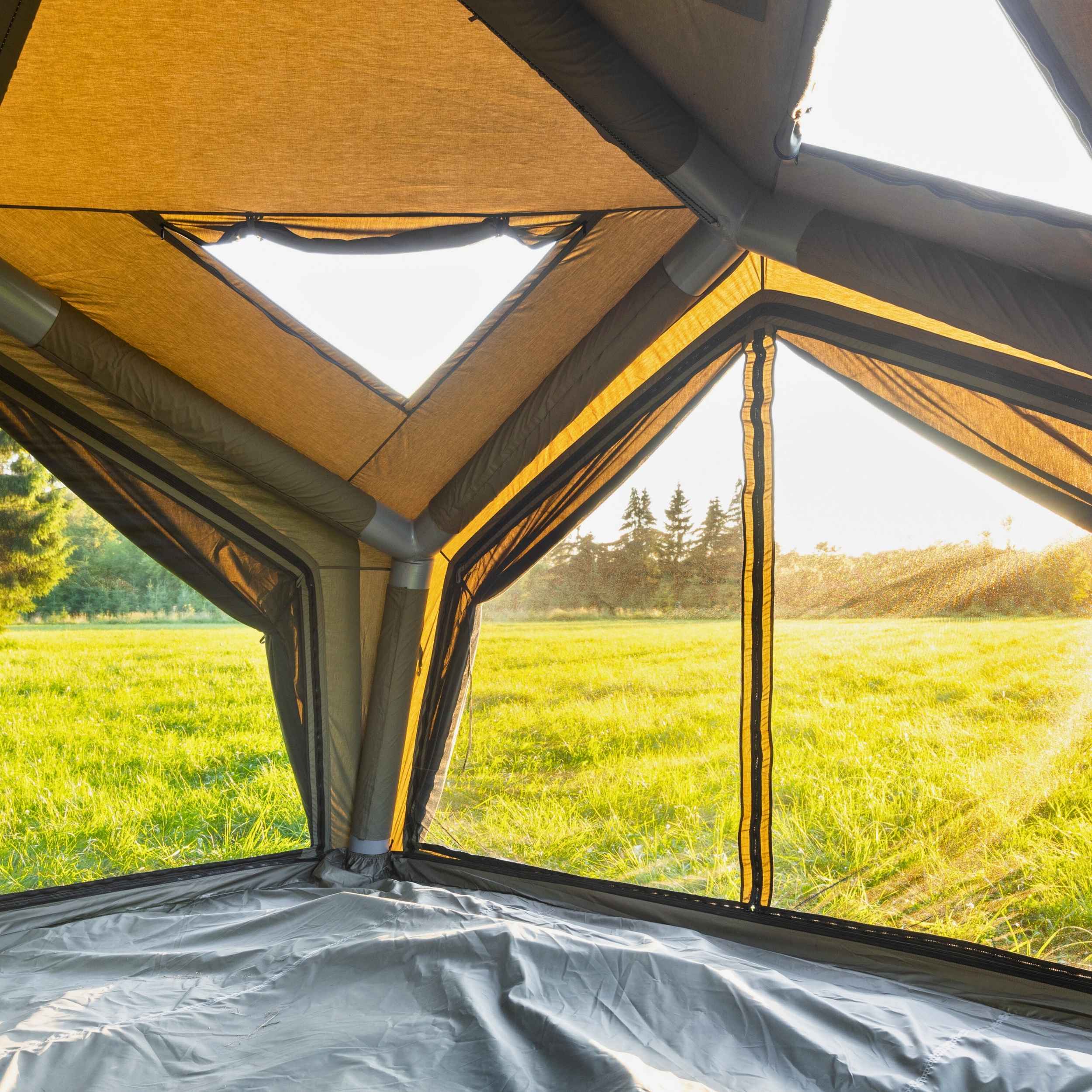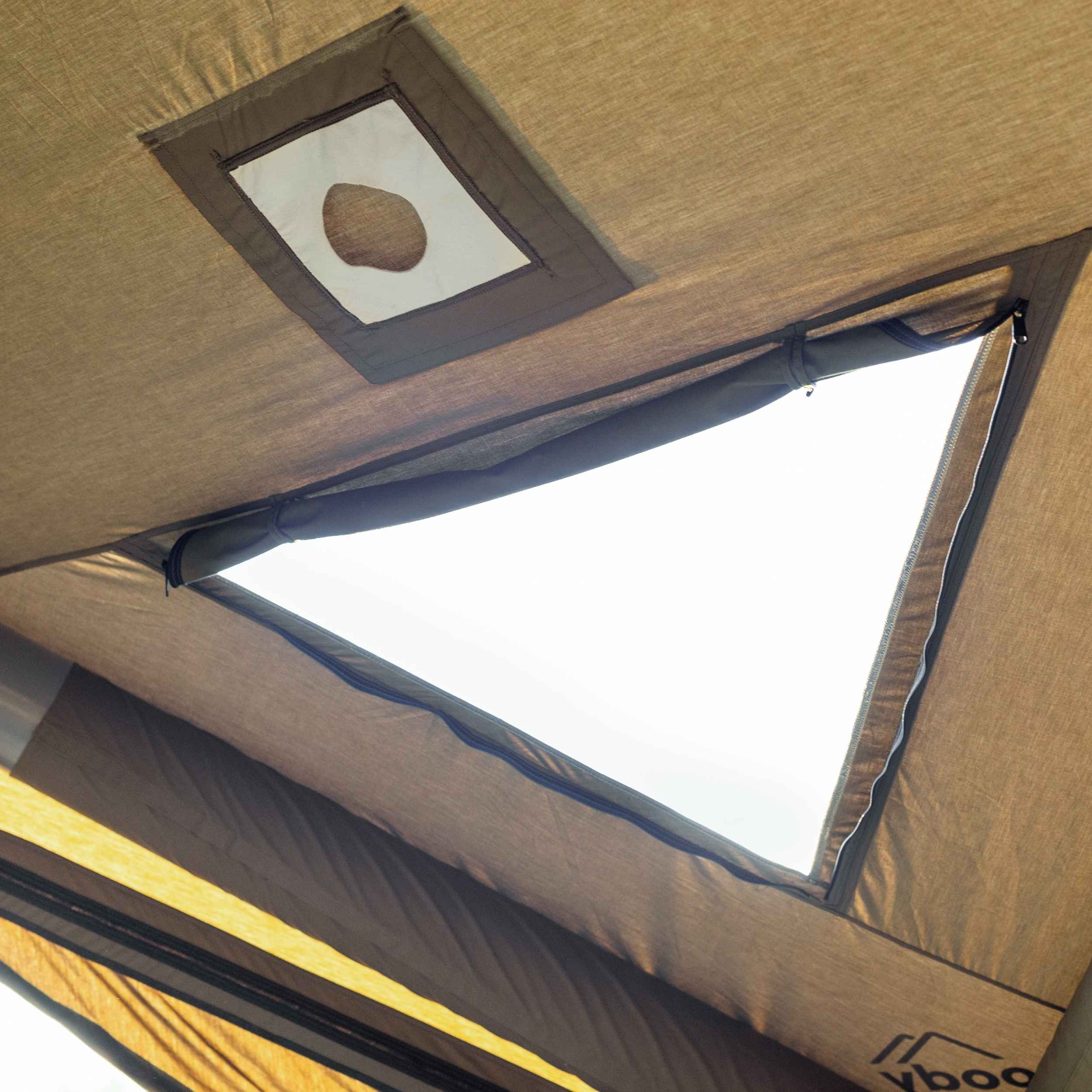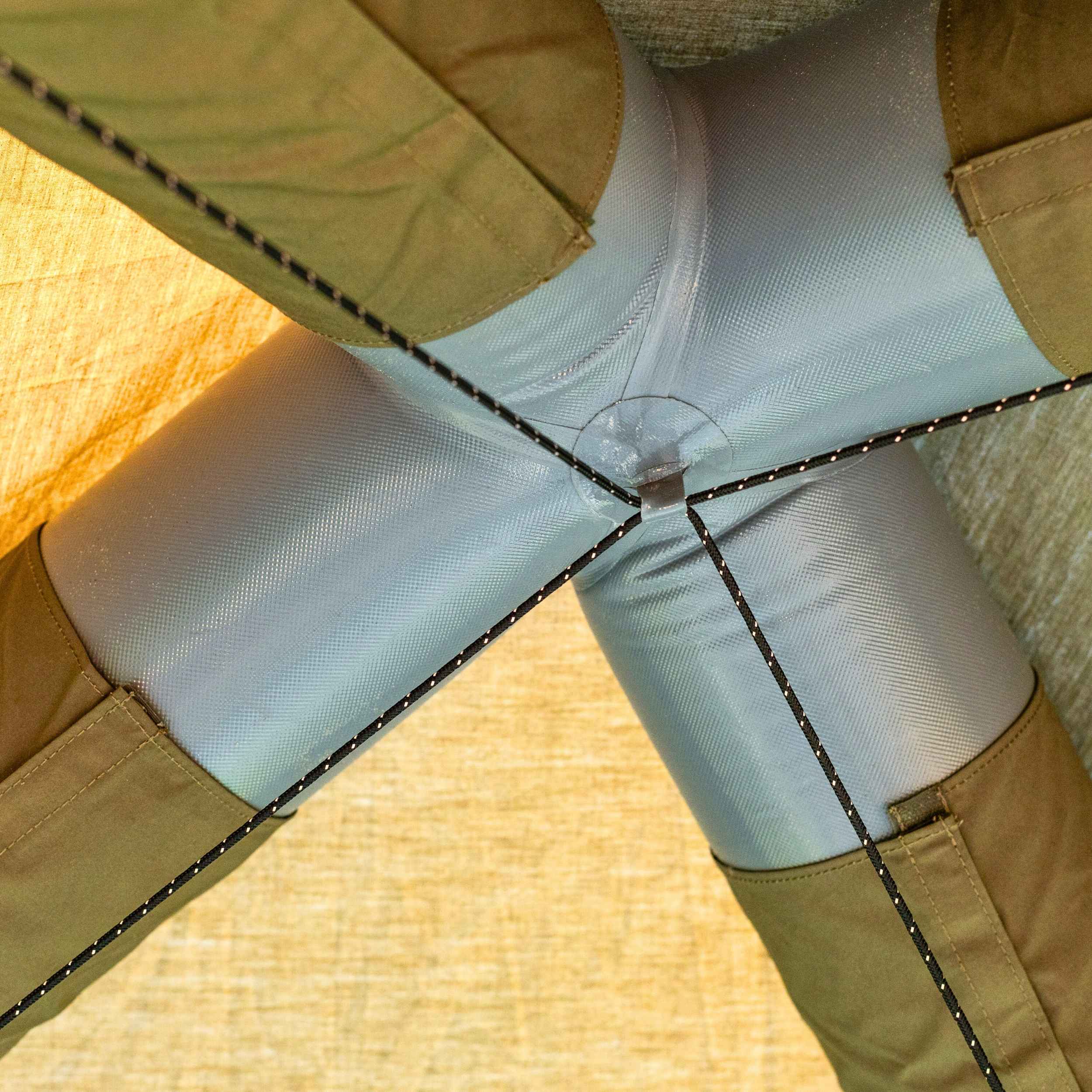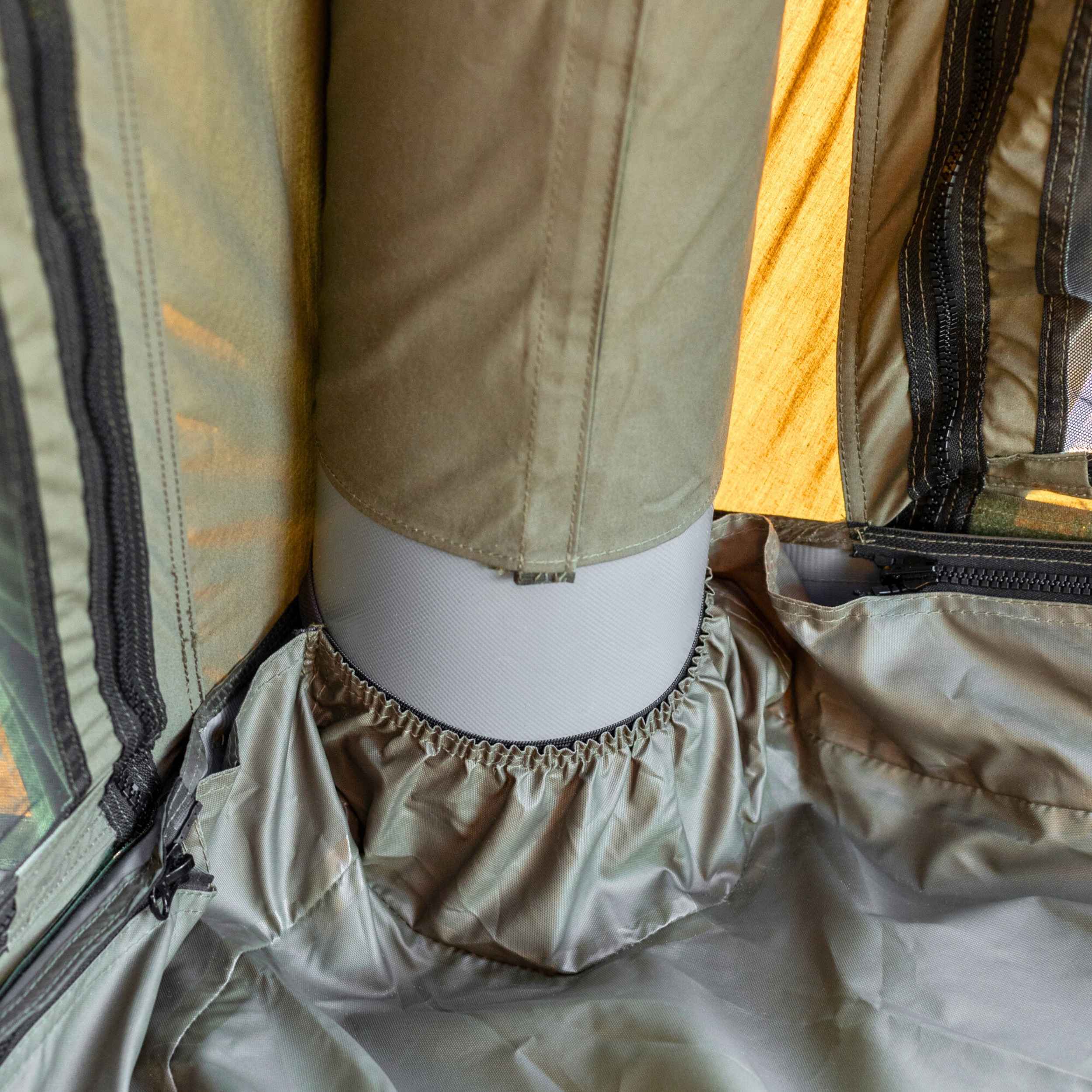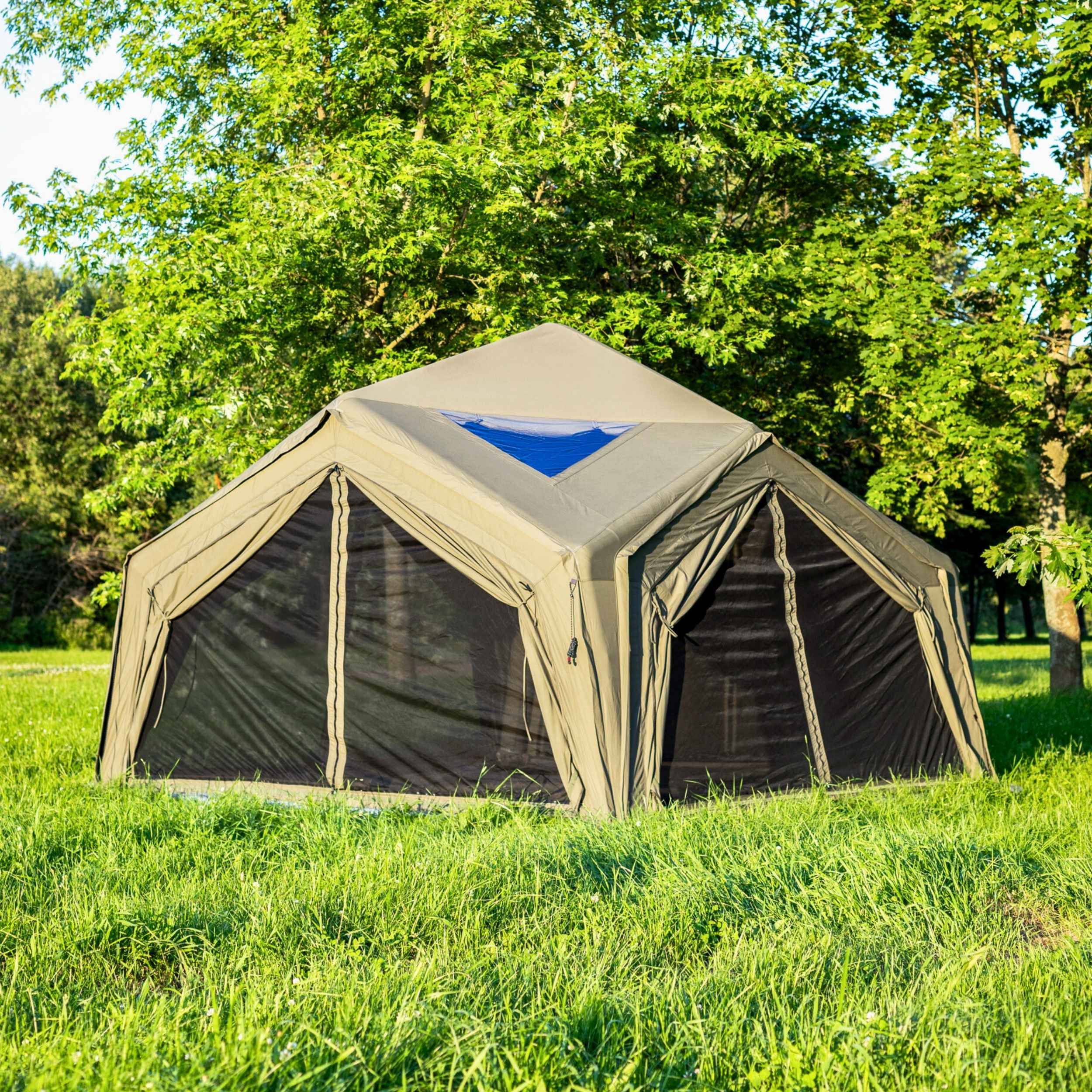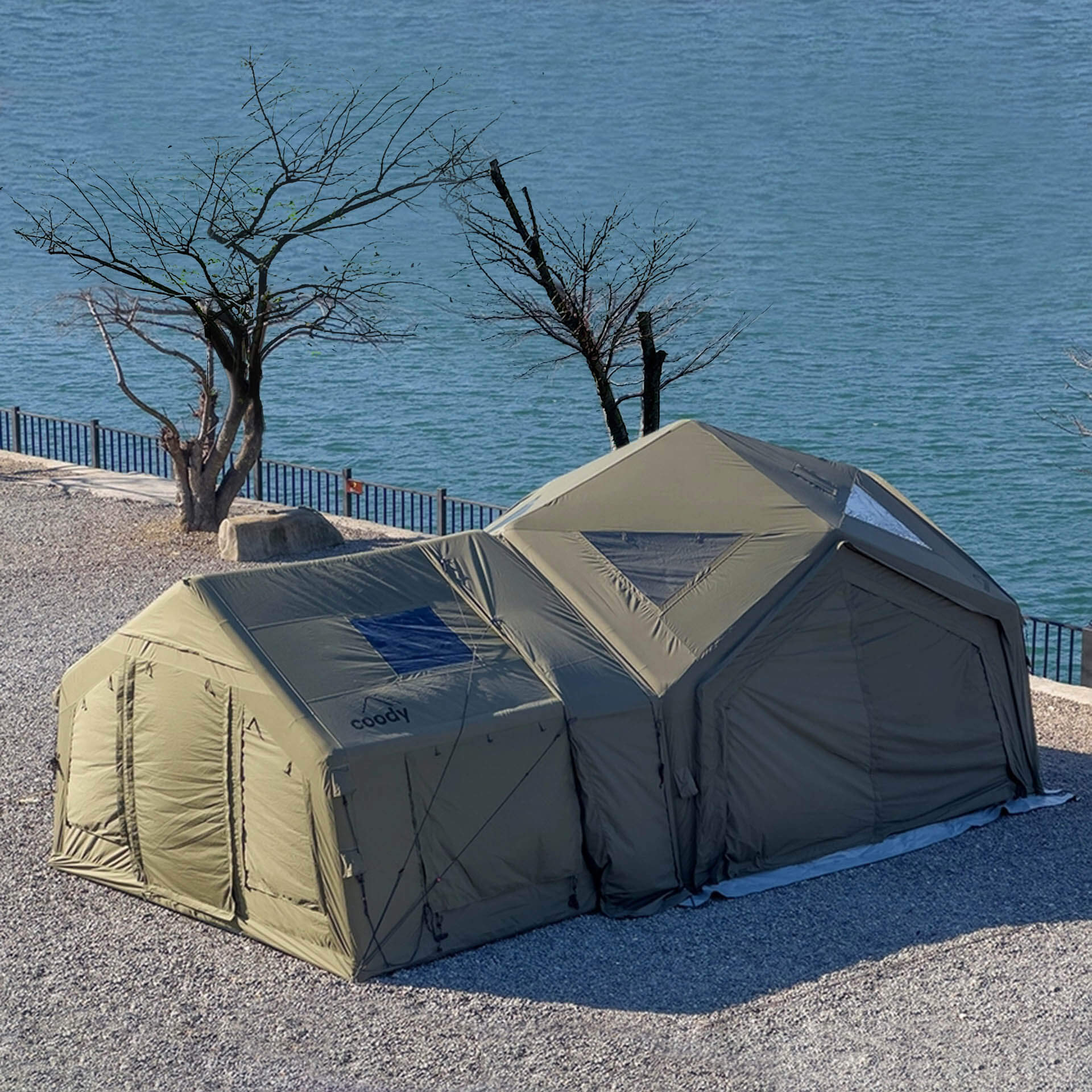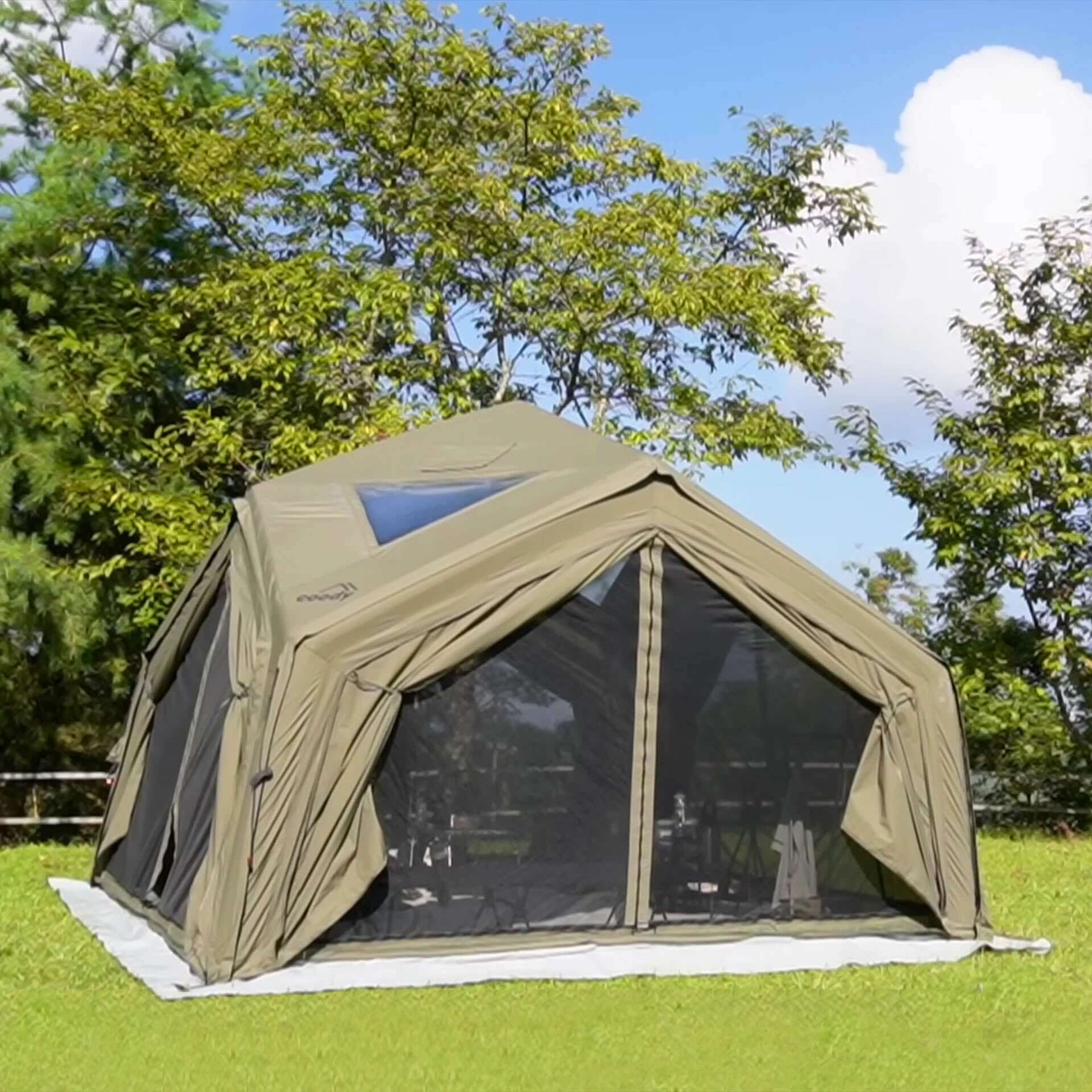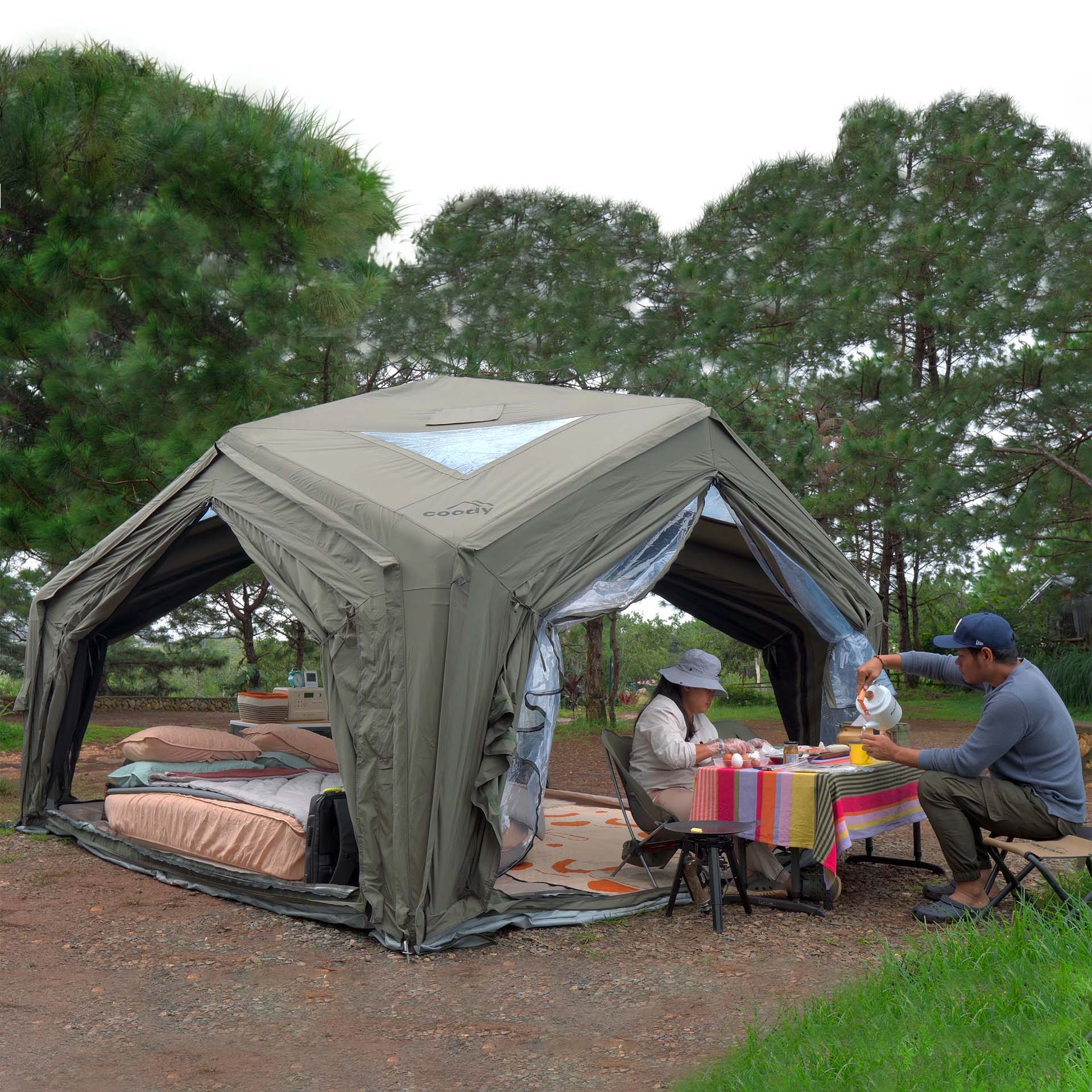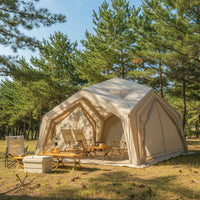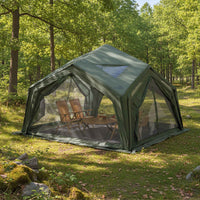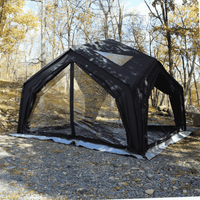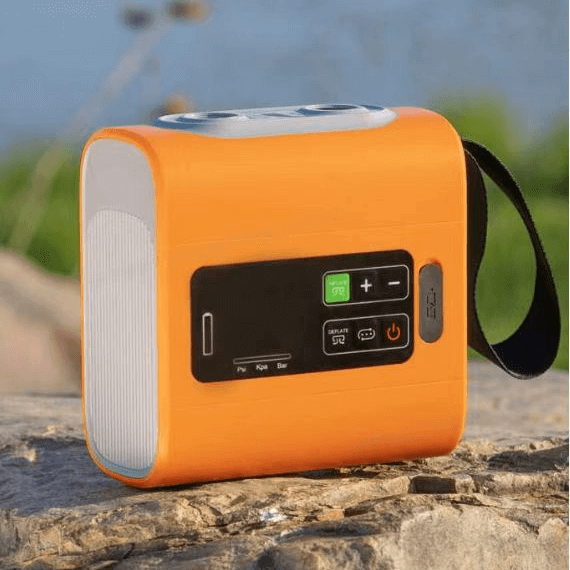Precautions raw: "User Manual for Inflatable Tents
⚒️ Preparation and Set Up
- Set up the tent on elevated ground, away from overhanging snow-laden trees and open flames.
- Aim to set up camp before dark.
- To keep the tent clean, we recommend using a groundsheet underneath.
- In strong winds, secure the tent with additional guy lines.
- Use the included rainfly to protect against rain, snow, and sunlight. If necessary, you can create an awning with poles (sold separately), though in this case only half of the tent will be covered.
🌡️ Temperature Range
- The tent can be used in outdoor temperatures from 5 °F to 104 °F.
- In cold weather, PVC materials become rigid — the floor and air beams stiffen, making folding more difficult. This is not a defect.
- For a comfortable sleep, use sleeping bags with the proper rating and insulated mats.
🔥 Heating & Insulation
- A dedicated chimney opening is provided for wood stoves. Always use stoves with a spark arrestor. Safe electric heaters are also acceptable. Open flames are prohibited.
- Maintain proper ventilation to prevent carbon monoxide buildup.
- If available, use the partition wall to help retain warmth in the sleeping area.
- Keep TPU windows closed to preserve heat, opening only for ventilation.
- Insulate the floor with rugs, blankets, or an additional liner.
💨 Air Pressure & Frame
- In freezing conditions, pressure inside the inflatable beams drops — check regularly and top up if needed.
- Ensure all valves are securely closed.
💧 Condensation & Moisture
Condensation is a natural process (similar to fogged car windows). The higher the fabric’s waterproofing, the more likely it is to occur.
Thanks to the breathable Terylene cotton, condensation inside our tents is minimal.
- – Keep vents slightly open.
- – Increase temperature gradually to avoid sudden heating.
- – Use a groundsheet under the tent.
- – Choose dry ground when possible.
- – Always dry the tent fully before packing.
🌧 Rain & Snow Protection
- In moderate rain, the tent protects against water for 4–5 hours (depending on intensity). In light or intermittent rain, the rainfly is not necessary.
- For prolonged rainfall, the included rainfly must be used.
- After rain, remove the rainfly to allow ventilation and prevent condensation.
- You may pre-attach or keep the rainfly rolled at the edge of the tent for quick use if extended showers are expected.
- In snowfall, always use the rainfly immediately. Snow accumulation on the fabric increases the risk of moisture penetration.
- Clear snow from the tent roof regularly.
- If zippers freeze, warm them with your hands or water — never force them.
- After winter use, thoroughly dry the tent before storage.
📦 Packing & Storage
- Remember: in cold weather, the PVC floor and fabric stiffen and fold less easily.
- Fully deflate the tent before packing.
- Dry in a well-ventilated place and store only when completely dry.
🧹 Care and Use
- Avoid wearing shoes inside the tent.
- Keep sharp objects away from the floor and walls.
- Protect from flammable substances and acids.
- Maintain cleanliness: mold and prolonged UV exposure reduce lifespan.
- Avoid extended direct sunlight; use the rainfly when needed.
⚠️ Fire Safety
- Exercise caution with electrical appliances.
- Keep exits clear for emergency use.
- Keep a fire extinguisher or other firefighting tool nearby.
- Do not allow children to play with fireworks near the tent.
Precautions value: "User Manual for Inflatable Tents
⚒️ Preparation and Set Up
- Set up the tent on elevated ground, away from overhanging snow-laden trees and open flames.
- Aim to set up camp before dark.
- To keep the tent clean, we recommend using a groundsheet underneath.
- In strong winds, secure the tent with additional guy lines.
- Use the included rainfly to protect against rain, snow, and sunlight. If necessary, you can create an awning with poles (sold separately), though in this case only half of the tent will be covered.
🌡️ Temperature Range
- The tent can be used in outdoor temperatures from 5 °F to 104 °F.
- In cold weather, PVC materials become rigid — the floor and air beams stiffen, making folding more difficult. This is not a defect.
- For a comfortable sleep, use sleeping bags with the proper rating and insulated mats.
🔥 Heating & Insulation
- A dedicated chimney opening is provided for wood stoves. Always use stoves with a spark arrestor. Safe electric heaters are also acceptable. Open flames are prohibited.
- Maintain proper ventilation to prevent carbon monoxide buildup.
- If available, use the partition wall to help retain warmth in the sleeping area.
- Keep TPU windows closed to preserve heat, opening only for ventilation.
- Insulate the floor with rugs, blankets, or an additional liner.
💨 Air Pressure & Frame
- In freezing conditions, pressure inside the inflatable beams drops — check regularly and top up if needed.
- Ensure all valves are securely closed.
💧 Condensation & Moisture
Condensation is a natural process (similar to fogged car windows). The higher the fabric’s waterproofing, the more likely it is to occur.
Thanks to the breathable Terylene cotton, condensation inside our tents is minimal.
- – Keep vents slightly open.
- – Increase temperature gradually to avoid sudden heating.
- – Use a groundsheet under the tent.
- – Choose dry ground when possible.
- – Always dry the tent fully before packing.
🌧 Rain & Snow Protection
- In moderate rain, the tent protects against water for 4–5 hours (depending on intensity). In light or intermittent rain, the rainfly is not necessary.
- For prolonged rainfall, the included rainfly must be used.
- After rain, remove the rainfly to allow ventilation and prevent condensation.
- You may pre-attach or keep the rainfly rolled at the edge of the tent for quick use if extended showers are expected.
- In snowfall, always use the rainfly immediately. Snow accumulation on the fabric increases the risk of moisture penetration.
- Clear snow from the tent roof regularly.
- If zippers freeze, warm them with your hands or water — never force them.
- After winter use, thoroughly dry the tent before storage.
📦 Packing & Storage
- Remember: in cold weather, the PVC floor and fabric stiffen and fold less easily.
- Fully deflate the tent before packing.
- Dry in a well-ventilated place and store only when completely dry.
🧹 Care and Use
- Avoid wearing shoes inside the tent.
- Keep sharp objects away from the floor and walls.
- Protect from flammable substances and acids.
- Maintain cleanliness: mold and prolonged UV exposure reduce lifespan.
- Avoid extended direct sunlight; use the rainfly when needed.
⚠️ Fire Safety
- Exercise caution with electrical appliances.
- Keep exits clear for emergency use.
- Keep a fire extinguisher or other firefighting tool nearby.
- Do not allow children to play with fireworks near the tent.
Dimensions
Width — 3.60 m (141.73")
Length — 3.60 m (141.73")
Height — 2.75 m (108.27")
Ceiling height — 2.60 m (102.36")
Internal usable area — 11.5 m² (124.43 ft²)
Net weight — 60 kg (132.28 lb)
Gross weight — 66 kg (145.51 lb)
FAQ
❓ Why Choose the Coody Dome Tent?
The Coody Dome Tent is a premium inflatable shelter designed for camping, glamping, and outdoor adventures. Combining durability, all-season weather protection, and a quick setup process, it offers a hassle-free outdoor experience. Unlike traditional tents, it features:
✔ Fast Inflation System – Set up in 10 minutes manually, 5 minutes with an electric pump.
✔ Spacious Dome Structure – 5-meter (16.4 ft) diameter, 2.7-meter (8.9 ft) peak height.
✔ High-Performance Fabric – Breathable cotton-polyester blend for insulation and comfort.
✔ Waterproof Oxford Floor – Detachable 300D Oxford flooring with 10 cm (4 in) raised edges to block moisture.
✔ All-Weather Protection – Built to handle wind, rain, and snow.
✔ Exceptional Ventilation – Three doors, five wall windows, and six skylights for airflow and lighting.
✔ Customizable Door Panels – Swap TPU windows for fabric panels to regulate sunlight and temperature.
✔ Modular Expansion – Connect multiple Dome Tents to create a larger outdoor setup.
⚙️ How Easy Is It to Set Up?
✔ Fast and stress-free – Inflate in 10 minutes manually, 5 minutes with an electric pump.
✔ No poles required – Just inflate and secure with stakes and guy lines.
✔ One-person setup possible, but two people make it faster.
🚗 Is It Easy to Transport?
✔ Weighs 44 kg (97 lbs) – Lighter than permanent glamping structures.
✔ Compact packing – Fits in SUVs, vans, and large sedans.
✔ For small cars, folding rear seats may be required for storage.
👨👩👧👦 How Many People Can Fit Inside?
✔ 5-meter (16.4 ft) diameter offers comfortable space for up to 6 people:
✔ 6 single sleeping bags with extra room for gear.
✔ 2 double air mattresses fit easily.
✔ 1 extra-large inflatable bed for a luxury glamping experience.
❄️ Is the Coody Dome Tent Suitable for Winter?
✔ Yes! This four-season inflatable tent includes:
✔ Insulated cotton-polyester fabric – Retains warmth while allowing breathability.
✔ Built-in stove jack – Compatible with wood-burning stoves like the Caminus M.
✔ Extra ports – For portable heaters or air conditioners.
✔ Six skylights – Let in natural light while keeping heat inside.
✔ Dome shape sheds snow naturally, preventing excessive buildup.
✔ Adjustable ventilation – Helps balance airflow and reduces condensation.
🚨 In extreme cold, air beams and fabric may stiffen—adjust air pressure as needed and avoid over-bending materials.
🌧 How Well Does It Handle Wind, Rain, and Snow?
✔ Fully waterproof – Raised 10 cm (4 in) floor edges prevent flooding.
✔ Reinforced air beam structure – Provides exceptional wind resistance.
✔ Full-coverage rainfly – Included for protection against heavy rain, snow, and harsh sunlight.
🔥 Can I Use a Stove or Heater Inside?
✔ Yes! The Coody Dome Tent is designed for safe stove and heater use.
✔ Heating Options:
✔ Wood-burning stoves (e.g., Caminus M) – A safe and efficient heat source.
✔ Portable camping heaters – Connect using dedicated ports.
✔ Air conditioning units – Install via built-in access ports.
🔥 Always ensure proper ventilation and use a heat-resistant mat under stoves!
💨 Does the Tent Provide Good Ventilation?
✔ Three doors + 11 windows – Five large side windows and six skylights optimize airflow.
✔ Breathable cotton-polyester fabric naturally minimizes condensation.
✔ Removable TPU windows allow for temperature regulation and sun control.
☀️ Is It Suitable for Hot Weather?
✔ Yes! The Coody Dome Tent excels in warm climates:
✔ Openable side doors and windows maximize ventilation.
✔ Fabric door panels can replace TPU windows to prevent heat buildup.
✔ Rain cover functions as a sunshade, keeping the interior cool.
✔ Automatic pressure release sensor – Releases excess air when pressure exceeds 8 PSI.
➕ Can the Coody Dome Tent Be Expanded?
✔ Yes! The tent is modular, meaning multiple Dome Tents can be linked to form a larger camping space—ideal for family trips, glamping sites, and extended outdoor stays.
🧼 What Type of Flooring Does It Have?
✔ 300D Oxford waterproof floor – Durable and fully removable for easy cleaning.
✔ Zip-off floor design – Equipped with a zipper for quick attachment/removal.
✔ Raised edges (10 cm / 4 in) – Blocks water seepage and enhances insulation.
✔ For winter camping – Adding foam mats or rugs improves insulation.
Dimension Packaging
Box 1
Width — 0.82 m (34.28")
Length — 0.55 m (21.65")
Height — 0.55 m (21.65")
Weight — 50.0 kg / 110.23 lb
Box 2
Width — 0.60 m (23.62")
Length — 0.26 m (10.24")
Height — 0.28 m (11.02")
Weight — 16.0 kg / 35.27 lb
Included in Package
Inflatable Tent — 1 piece
Hand Pump — 1 piece
Rain Fly — 1 piece
Front Wall PVC/Canvas — 1 piece
Pre-attached guy ropes
Ground Nails — 1 set
Storage Bag — 2 pieces
Connector — 1 pieces
User Manual for Inflatable Tents
⚒️ Preparation and Set Up
- Set up the tent on elevated ground, away from overhanging snow-laden trees and open flames.
- Aim to set up camp before dark.
- To keep the tent clean, we recommend using a groundsheet underneath.
- In strong winds, secure the tent with additional guy lines.
- Use the included rainfly to protect against rain, snow, and sunlight. If necessary, you can create an awning with poles (sold separately), though in this case only half of the tent will be covered.
🌡️ Temperature Range
- The tent can be used in outdoor temperatures from 5 °F to 104 °F.
- In cold weather, PVC materials become rigid — the floor and air beams stiffen, making folding more difficult. This is not a defect.
- For a comfortable sleep, use sleeping bags with the proper rating and insulated mats.
🔥 Heating & Insulation
- A dedicated chimney opening is provided for wood stoves. Always use stoves with a spark arrestor. Safe electric heaters are also acceptable. Open flames are prohibited.
- Maintain proper ventilation to prevent carbon monoxide buildup.
- If available, use the partition wall to help retain warmth in the sleeping area.
- Keep TPU windows closed to preserve heat, opening only for ventilation.
- Insulate the floor with rugs, blankets, or an additional liner.
💨 Air Pressure & Frame
- In freezing conditions, pressure inside the inflatable beams drops — check regularly and top up if needed.
- Ensure all valves are securely closed.
💧 Condensation & Moisture
Condensation is a natural process (similar to fogged car windows). The higher the fabric’s waterproofing, the more likely it is to occur.
Thanks to the breathable Terylene cotton, condensation inside our tents is minimal.
- – Keep vents slightly open.
- – Increase temperature gradually to avoid sudden heating.
- – Use a groundsheet under the tent.
- – Choose dry ground when possible.
- – Always dry the tent fully before packing.
🌧 Rain & Snow Protection
- In moderate rain, the tent protects against water for 4–5 hours (depending on intensity). In light or intermittent rain, the rainfly is not necessary.
- For prolonged rainfall, the included rainfly must be used.
- After rain, remove the rainfly to allow ventilation and prevent condensation.
- You may pre-attach or keep the rainfly rolled at the edge of the tent for quick use if extended showers are expected.
- In snowfall, always use the rainfly immediately. Snow accumulation on the fabric increases the risk of moisture penetration.
- Clear snow from the tent roof regularly.
- If zippers freeze, warm them with your hands or water — never force them.
- After winter use, thoroughly dry the tent before storage.
📦 Packing & Storage
- Remember: in cold weather, the PVC floor and fabric stiffen and fold less easily.
- Fully deflate the tent before packing.
- Dry in a well-ventilated place and store only when completely dry.
🧹 Care and Use
- Avoid wearing shoes inside the tent.
- Keep sharp objects away from the floor and walls.
- Protect from flammable substances and acids.
- Maintain cleanliness: mold and prolonged UV exposure reduce lifespan.
- Avoid extended direct sunlight; use the rainfly when needed.
⚠️ Fire Safety
- Exercise caution with electrical appliances.
- Keep exits clear for emergency use.
- Keep a fire extinguisher or other firefighting tool nearby.
- Do not allow children to play with fireworks near the tent.
Specification
Capacity — 2-6
Seasons — Three-season tent (not lower than 0 °C (32°F))
Tent color — Khaki
Floor color — Khaki
Tent material — 210gsm TC Fabric (Terylene Cotton)
Floor material - Oxford, removable
Air tube material — PVC
Number of windows — 4 in the roof
Number of entrances — 4
Stove jack diameter — 10 cm (3.93")
Air pump type — Hand pump
Recommended pressure — 6-8 psi
Warranty — 1 year
Connects with Other Tents for More Space
Link the Koala Hub with other Koala tents to make one big shared area. Great for group hangouts or family setups.


Sets Up in Minutes
Inflate, secure, and you’re done. No poles, no stress, just easy camping.
Big and Open Inside
Plenty of room to stretch out, play games, or just relax. High ceilings make it feel even bigger.
Built to Handle Any Weather
Rain, wind, or sun — this tent stays solid. Keeps you dry and cozy no matter what.

Spring to Fall Friendly, Winter Requires Care
The Koala Hub Tent is perfect for spring, summer, and fall, handling rain and wind. In winter, it’s good for light snow, but wet snow can get heavy, so clear it off to avoid issues.
Freezing temps can make the PVC frame stiff, which makes packing up harder—it might not fit back into the bag unless fully deflated with an electric pump.
If you’re heating the tent, melting snow on the roof can seep into the fabric, so keep an eye out for leaks.
It’s great for cold-weather camping but has its limits with snow and freezing conditions.
Expert Video Reviews
Independent experts test our tents in real conditions, highlight the benefits, and answer your key questions before you buy.

